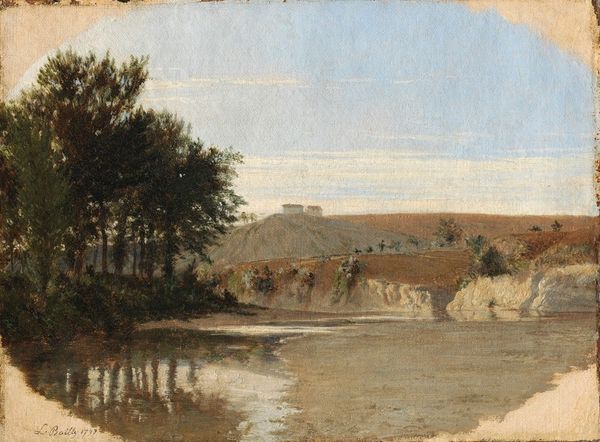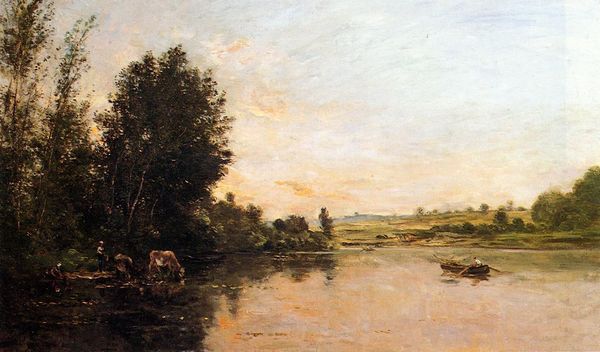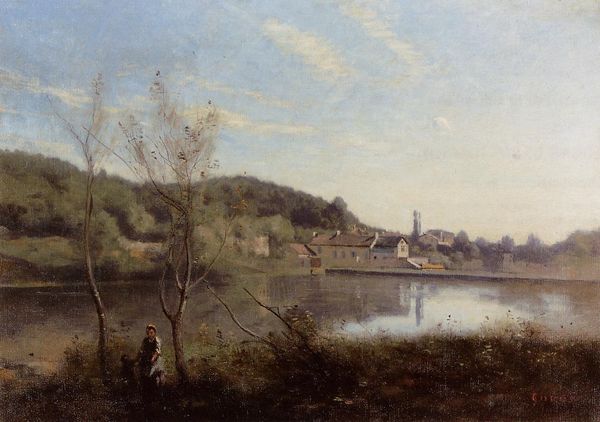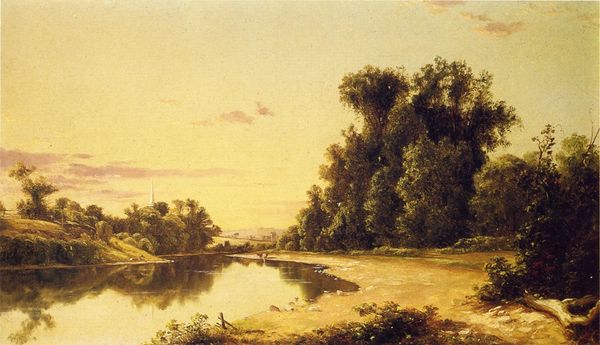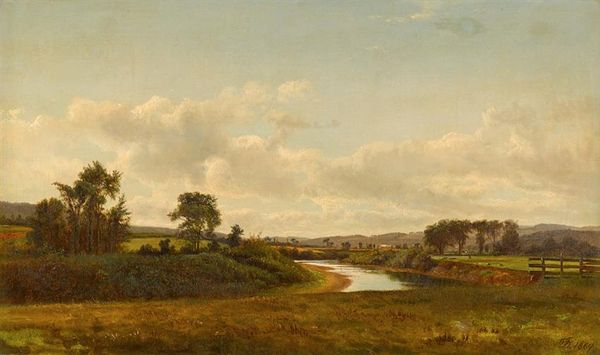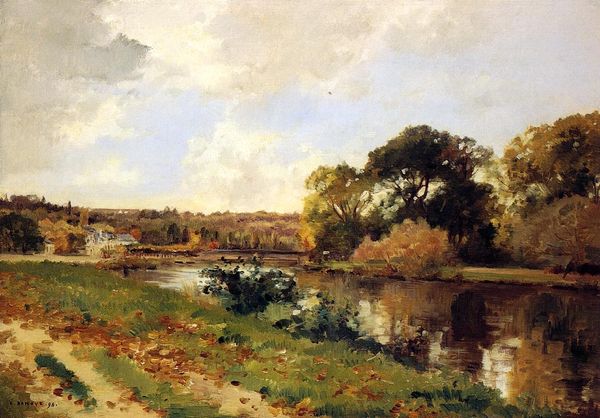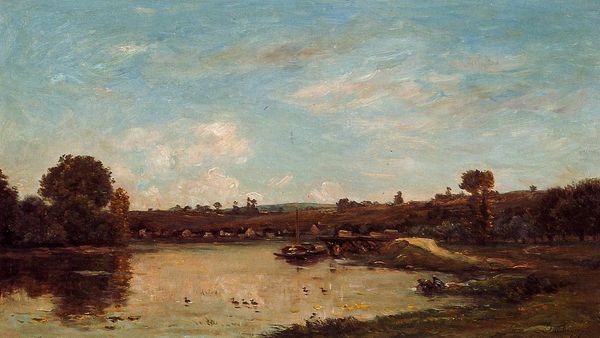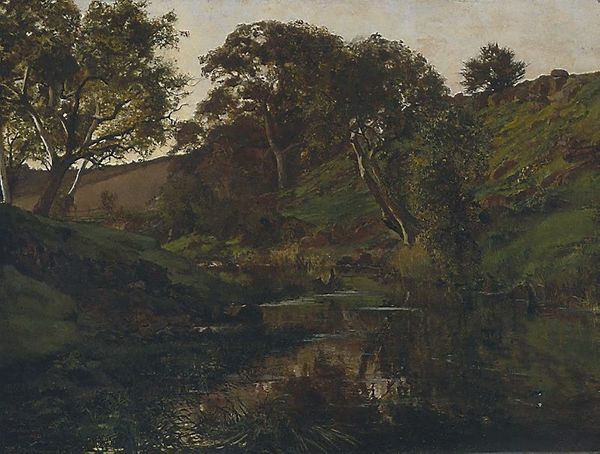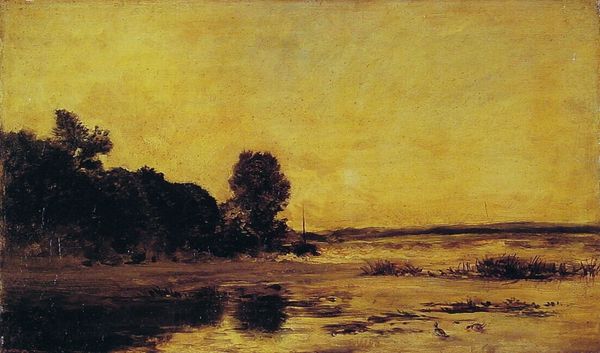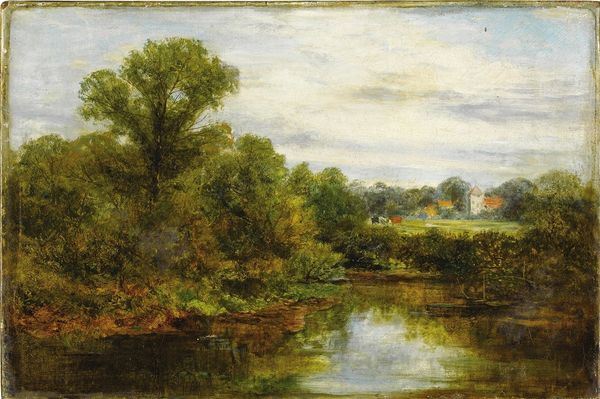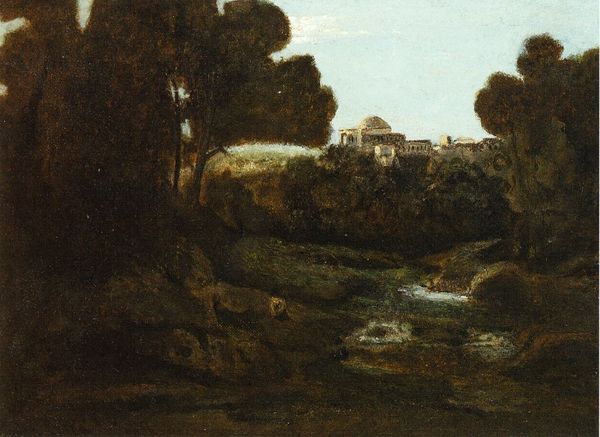
painting, plein-air, oil-paint
#
tree
#
sky
#
painting
#
plein-air
#
oil-paint
#
landscape
#
river
#
impressionist landscape
#
oil painting
#
romanticism
#
water
#
watercolor
#
realism
Copyright: Public domain
Curator: Corot's "Aqueduct," painted in 1839, presents a scene steeped in a certain quietude. It is oil paint applied en plein air, a practice central to Corot’s artistic output and a testament to the shifting relationship between artists and their working conditions. What strikes you upon first viewing? Editor: A palpable sense of calm, actually. The colors are muted, earthy tones predominating. The composition is horizontal, which further adds to this feeling of repose. I'm immediately drawn to the reflection of the aqueduct and the surrounding landscape in the water, creating a mirror image that feels almost dreamlike. Curator: It's precisely that quiet observation, informed by working directly in nature, that reveals so much about artistic labour at the time. Here is Corot in situ with brush in hand—a democratized space for creating artwork. His technique reveals the process too. Editor: Absolutely. The "en plein air" approach wasn't just about capturing visual accuracy; it signified a shift in the art world itself. With paint tubes becoming readily available, artists gained newfound mobility. This escape from the studio reflected societal changes, a rising interest in leisure, landscape and individual experience shaping art's direction. The landscape isn't just background here, it's front and center. Curator: And this shift enabled Corot to imbue the industrial—an aqueduct in the distance—with an atmospheric presence using thin applications of pigment. Its physical location provided him with the material he required: river water for rinsing brushes; and even the possibility of pigment gathering too, if he were so inclined. We get a view onto a social reality via the materiality and working processes of a painter like Corot. Editor: It also encourages us to look closely at how such idyllic scenes were used in the social imagination of the time. While technology such as this aqueduct transformed the environment in real terms, landscape painting like Corot's played a role in mediating its effect, constructing it perhaps more as a harmony between humans and nature rather than any disruption thereof. What do you make of the broader relationship between technological advancement and visual representations within his practice? Curator: He gives us something interesting in his landscapes by presenting the means of society. Editor: Indeed, I feel that he's shown us that the means themselves were up for reimagining as well.
Comments
No comments
Be the first to comment and join the conversation on the ultimate creative platform.
